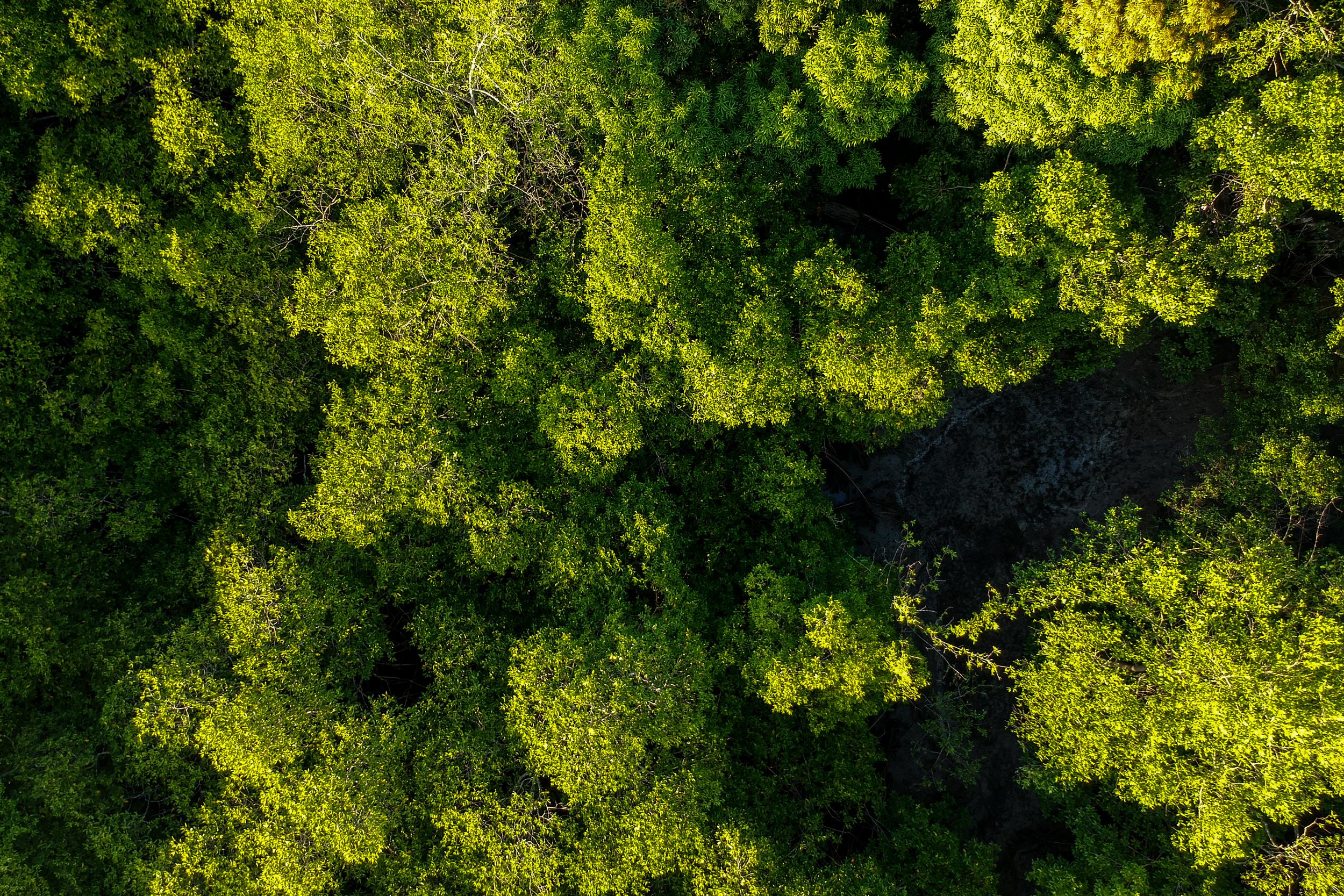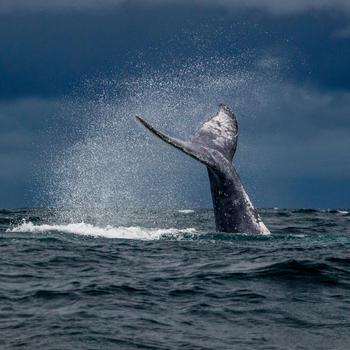This article was updated on September 19, 2019, after the California Air Resources Board (CARB) voted to adopt the Tropical Forest Standard.
As fires rage across the Amazon, an act thousands of miles away will generate financial incentive to help keep those forests standing.
In an historic decision, the California Air Resources Board (CARB) voted to adopt the Tropical Forest Standard on September 19, 2019, securing the state’s legacy as an environmental leader on a global scale for generations to come. This Standard provides a blueprint for allowing tropical forest protection initiatives to be included in the state’s programs to cut climate-warming carbon emissions. By passing the Tropical Forest Standard, California is sending a strong signal to the rest of the world that it pays to protect nature.
Here are six things you need to know about the Tropical Forest Standard.
1.) The Tropical Forest Standard can help slow down the rate of climate change and regulate rainfall.
One of the most effective ways to stop climate change is to address one of its major drivers: deforestation. Tropical deforestation represents about 20 percent of all global annual greenhouse gas emissions, and as forests are wiped out by fire, agriculture and development, that number will only continue to grow.
Deforestation in the tropics can also have disastrous impacts on rainfall in other regions of the world. One study projected that complete deforestation of the Amazon, which is more than 7,000 kilometers (4,350 miles) away from California, could cut the snowpack in the Sierra Nevada mountains in half — diminishing a critical water supply for the state’s population. Reduced deforestation under the Tropical Forest Standard can help prevent harsh floods or severe droughts all over the world.
“The Tropical Forest Standard will identify the types of tropical forest protection initiatives that could be integrated into California’s prominent cap-and-trade system. It does this by allowing industries to offset a small part of their carbon emissions by paying countries in the tropics not to cut down their trees,” explained Joanna Durbin, the director of the Climate, Community and Biodiversity Alliance at Conservation International and a key participant in the development of the Tropical Forest Standard.
2.) The Tropical Forest standard will target regions where funds from trading carbon offsets will have the greatest impact.
Tropical forests are responsible for half of all the carbon stored in the world’s forests. These ecosystems could tip the scale toward halting climate change — but only if they are protected. The Tropical Forest Standard will identify places that meet California’s strict requirements for industries to use as carbon offsets, which allow companies to “pay” for a small portion of the carbon they are putting out into the atmosphere. The money from these offsets goes into funding carbon-killing activities, such as reforestation, restoring habitats and renewable energy development. Under the Tropical Forest Standard, offset trading would be regulated by states and provinces that have shown they have already reduced deforestation levels more than 10 percent below its average rate over the past decade.
“The finance from the trade in offsets creates incentives and funding to support measures to reduce deforestation in the places where it matters most,” said Durbin in an article for Ecosystem Marketplace emphasizing the significance of passing the Tropical Forest Standard. Early analysis shows that if the Standard is approved, it could generate more than US$ 1 billion toward the reduction of tropical deforestation in the next 10 years.
Some countries are already showing the immense economic and environmental potential of carbon market programs. For example, Colombia’s recently implemented carbon tax requires companies to pay a tax for the emissions they release into the atmosphere. As an alternative to the tax, these companies can instead buy carbon credits from regulated projects within the country, leading to an increasingly high demand for forest carbon credits. In fact, this carbon tax is already generating more than US$ 250 million per year, which helps support conservation activities that preserve Colombia’s protected areas, supports forest restoration and more.
3.) The Tropical Forest Standard gives a voice to indigenous communities.
Indigenous peoples use or manage 35 percent of intact forests, yet they are often overlooked as influential actors in conservation.
To engage these groups in the political conversation, the Tropical Forest Standard includes a set of guiding principles actually written by indigenous peoples in collaboration with government representatives. Under the Standard, states and jurisdictions are required to work with indigenous peoples and forest communities throughout an offset program’s design, implementation and distribution of funds, to ensure that it respects traditional rights and knowledge.
“It’s extremely important that any activity to reduce emissions gets consent from indigenous peoples and local communities where they may be affected by those activities,” said Durbin, who led the development of the social and environmental safeguards included in the Tropical Forest Standard. This Standard recognizes the powerful role indigenous peoples and local communities play in environmental protection — especially when fighting to stop climate change.
“Indigenous peoples are victims of climate change, and yet they have knowledge developed from years of interaction with the environment that could benefit humanity,” said Minnie Degawan, the director of Conservation International’s Indigenous and Traditional Peoples Program, in an earlier interview with Conservation News. “They want to partner with others, but it has to be a just partnership.”
4.) The Tropical Forest Standard can help countries bounce back from natural disasters.
A recent article published in ProPublica highlighted concerns that forest offsets are too vulnerable to disasters, such as the fires currently burning through the Amazon. If anything, said Durbin, these fires actually reinforce the need for a robust climate financing program like the Tropical Forest Standard. Durbin explained the many ways that the Tropical Forest Standard addresses permanence, the concept of determining whether carbon will remain removed from the atmosphere or if it will quickly return.
“Essentially, if a natural disaster — say, a wildfire — increases emissions in one part of a country, this can be counteracted by maintaining forests in other places within that country,” said Durbin.
In addition, the Standard requires that the underlying drivers of deforestation are addressed, supporting a path to sustainability that improves the economy and local livelihoods while maintaining forests. The Standard also obligates a portion of the credits generated to be set aside in a “buffer account,” ensuring that if deforestation increases during a natural disaster, replacement credits are available that were issued before the event occurred.
5.) The Tropical Forest Standard can help protect the world’s biodiversity.
Tropical forests are home to more than half of the world’s plant and animal biodiversity.
In the Amazon, 10 percent of the entire world’s species are at risk of extinction due to deforestation, climate change and uncontained fires surging through forestland. If the loss of biodiversity continues at this alarming rate, global food, commercial forestry and ecotourism industries could lose US$ 338 billion per year. To prevent this, the Tropical Forest Standard incentivizes industries to protect rich ecosystems like the Amazon, while simultaneously preserving biodiversity.
“Forest initiatives that meet the Tropical Forest Standard need to ensure social and environmental benefits from land management,” said Durbin. “Land management affects people, wildlife and biodiversity — each critical parts of a thriving ecosystem.”
6.) The Tropical Forest Standard can serve as a model for countries around the world.
When the California cap-and-trade system — which caps industries’ emissions while building a market around offsetting a small portion of them — began in 2013, critics were doubtful that it could actually make an impact on the environment and benefit the economy. By 2017, it had already generated US$ 6.5 billion in funds to spend on programs that battle climate change and reduced statewide emissions.
With the fifth-largest economy in the world, California could act as a model that other countries can look to when developing climate finance programs. If enacted, the Tropical Forest Standard would provide a comprehensive design for other states and industries to develop emission mitigation programs, such as the International Aviation Organization while refining its Carbon Offsetting and Reduction Scheme.
“Environmental experts, climate scientists and progressive policymakers agree that an active offsets market can help to move the needle on climate change — now,” Durbin said. “The world is watching.”
Joanna Durbin is the director of the Climate, Community and Biodiversity Alliance at Conservation International. Kiley Price is a staff writer for Conservation International.
Want to read more stories like this? Sign up for email updates here. Donate to Conservation International here.
Cover image: Trees in the Amazon rainforest, Brazil. (© Flavio Forner)
Further Reading:



